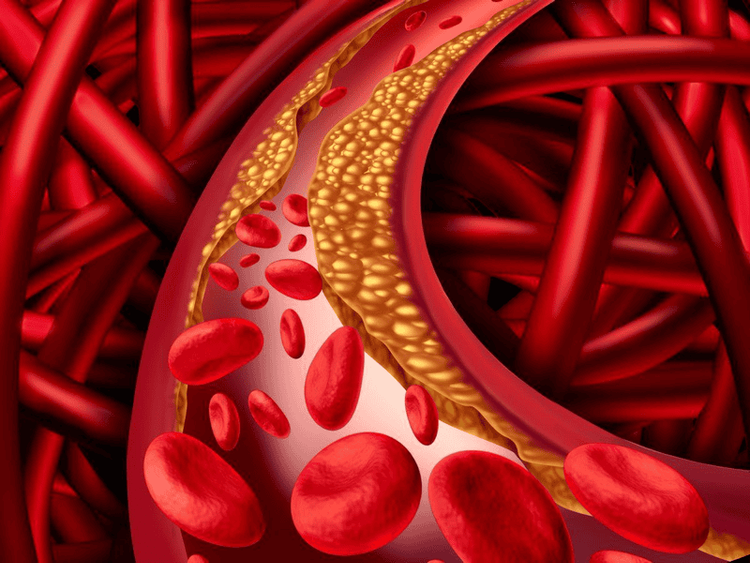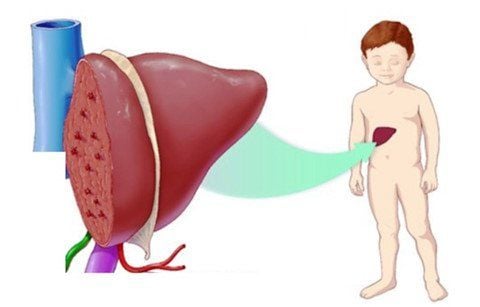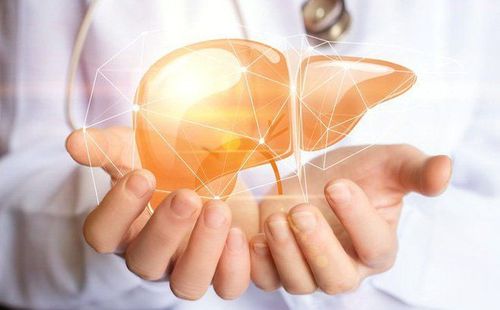This is an automatically translated article.
The article is expertly consulted by a Doctor of Gastrointestinal Endoscopy - Department of Medical Examination & Internal Medicine - Vinmec Da Nang International General Hospital.Congenital biliary atresia is a rare disease of the liver and biliary tract that results from an unexplained inflammatory process that destroys the intrahepatic and extrahepatic bile ducts, impeding the outflow of bile. leading to fibrosis, biliary obstruction and progression of cirrhosis. Diagnosis of congenital biliary atresia plays an important role in early detection and treatment of the disease, avoiding unpredictable complications such as liver failure and death.
1. Clinical diagnosis
Based on the patient's clinical manifestations, the doctor can diagnose biliary atresia. The symptoms are:Jaundice lasting more than 2 weeks due to benign indirect hyperbilirubinemia. This symptom is seen in 15% of newborns. Jaundice in biliary atrophy is not specific, only a warning value for screening; Discolored stools: Found in 50% of infants with biliary atresia. Over time, biliary obstruction becomes more apparent, the incidence increases. This symptom is of high value in the diagnosis of biliary atresia because the sensitivity is up to 89.7% and the specificity is 99.9%; Dark urine; The liver is enlarged, firm to palpation; Splenomegaly suggests advanced cirrhosis and portal hypertension; A small number of children with congenital biliary atresia show signs of malnutrition, anemia, and growth retardation; Symptoms of decreased prothrombin ratio due to malabsorption of vitamin K such as external bleeding, intracranial bleeding,...; Symptoms of liver failure, ascites, edema, collateral circulation, ... in patients with biliary atresia come late.
2. Subclinical diagnosis
2.1 Biochemical tests When a patient is suspected of having biliary obstruction, blood, stool, and urine tests should be performed. Diagnostic results for patients with biliary atresia are as follows:Increased blood bilirubin, mainly direct bilirubin: Direct bilirubin increased > 2mg/dl or > 20% total bilirubin; Increased levels of bile acids in the blood;

Nồng độ acid mật trong máu tăng
Ultrasound needs to be done at 3 times: when the baby is hungry, 15 minutes after feeding and 1 hour after feeding. When the baby is hungry, the patient should fast for at least 3 hours before the ultrasound. The doctor will assess the diameter and length of the gallbladder during these times.
Children with congenital biliary atresia often have one of the abnormal ultrasound manifestations such as: no gallbladder on ultrasound, small gallbladder - does not change in size after eating, gallbladder shape or wall Abnormal biliary tract, triangular cord sign over 3mm. With this finding, sonographic congenital biliary atresia can be diagnosed with a sensitivity of 84% and a specificity of up to 98%.
In addition, an important point in the diagnosis of biliary atresia associated with hilar cyst formation, ultrasound is also useful in detecting cysts.
However, ultrasound cannot confirm the diagnosis. The sensitivity and specificity of ultrasound in the diagnosis of congenital biliary atresia is not high, according to most studies, it only ranges from 80-85%. In addition, there are cases where the presence of a gallbladder makes it difficult to distinguish between a pediatric patient with terminal atrophy of the common bile duct from neonatal hepatitis.
2.3 Liver scintigraphy - radioisotope scintigraphy is a method of high diagnostic value for biliary atresia, and should be performed early if possible. If the patient has biliary obstruction, the radioactive TC99m used will be absorbed into the liver, not excreted into the intestine.
The presence of Tc99m radioisotope in the small intestine after drug use helps to exclude congenital biliary atresia. However, in cases of solid biliary syndrome or biliary hypoplasia, hepatobiliary scintigraphy is of little help in differential diagnosis.
2.4 Endoscopic retrograde cholangiopancreatography (ERCP) With the advent of age-appropriate endoscopic instruments for infants, through endoscopic retrograde cholangiopancreatography, doctors can inject Contrast in the biliary tract to diagnose whether the patient has biliary atresia or not. This method has an accurate diagnosis of biliary atresia of 86%.
2.5 Biopsy Biopsy is still considered a decisive diagnostic method in cases of congenital biliary atresia that are difficult to diagnose by other techniques. Biopsy is often indicated in pediatric cases where a gallbladder is found. Biopsy procedures are usually performed through the common incision, laparoscopically, or even percutaneously.
Anatomical features of congenital biliary atresia include:
General: Dark green cholestatic liver, rough and rough surface; Microscopic: Cholestasis, fibrosis around the portal space, twisting of the liver trabeculae.
3. Definitive diagnosis

Chẩn đoán xác định bênh ở trẻ sơ sinh
Clinical: Prolonged neonatal jaundice, discolored stools, enlarged liver; Biochemistry: Increased levels of bilirubin in the blood and lipoproteins in the blood; Pictures: Ultrasound, scintigraphy of hepatobiliary, laparoscopy combined with intraoperative cholangiography; Liver biopsy: There is cholestasis, fibrosis around the portal space.
4. Differential diagnosis
It is necessary to distinguish biliary atresia with pathologies such as:Neonatal jaundice; Neonatal hepatitis; Congenital biliary hypoplasia (condensed biliary syndrome); Hereditary cholestatic jaundice; α1-antitrypsin deficiency. When the child has clinical manifestations of biliary atresia, parents should soon take the child to a reputable hospital to perform modern diagnostic methods. Early diagnosis and detection of the disease contributes to improving the chances of successful treatment for children.
Please dial HOTLINE for more information or register for an appointment HERE. Download MyVinmec app to make appointments faster and to manage your bookings easily.













